|
Diamond
Chain and Manufacturing Company During World War Two
1890-xxxx
Indianapolis Chain and Stamping
Indianapolis, IN
1890-2023
This page updated 5-27-2024.
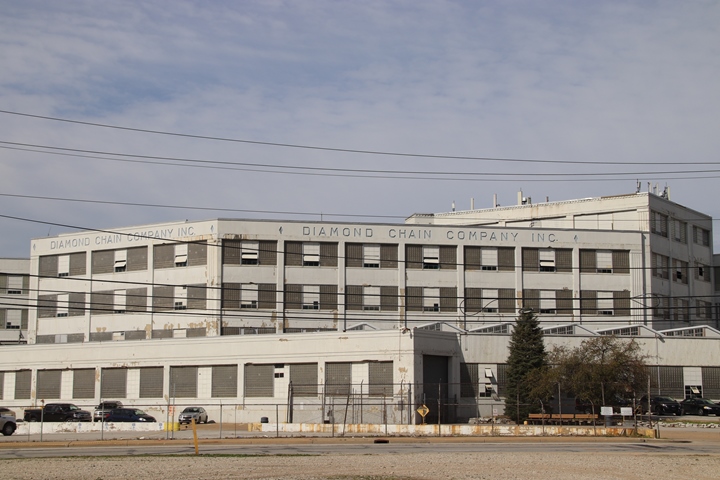
The Diamond Chain and Manufacturing Company
has been in business in Indianapolis, IN since 1890, and at this
location on 402 Kentucky Avenue since 1918. Over the years, there
have been several different corporate owners of the Diamond Chain
Company. In 2020, Timken purchased the company and announced the
plant shown above, located on the near southwest section of downtown
Indianapolis, would close in early 2023. Also, the jobs of the 240
persons who work at the plant are going away when it closes. The
operations that are still performed at this plant will be moved to
Illinois. When this factory was built, multi-story factories were
the norm. Built in an era when public transportation or walking
was the normal way to get to work, factories with several stories were
built with a small footprint. Locating in an industrial area on
the near southwest side of Indianapolis placed the Diamond Chain plant
close to its workers. But times have changed, and it is the last
factory left in the area. Author's photo.
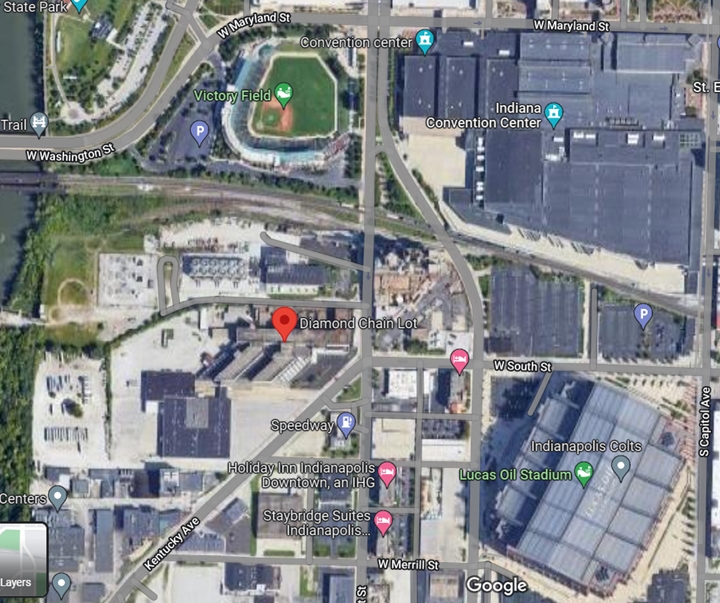
This Google satellite image shows that the
Diamond Chain factory is in an excellent location for redevelopment with
two sports stadiums, the Indiana Convention Center, and two hotels
nearby. The land that the plant sits on is probably worth more
than the factory building itself, so it will be razed in 2023.
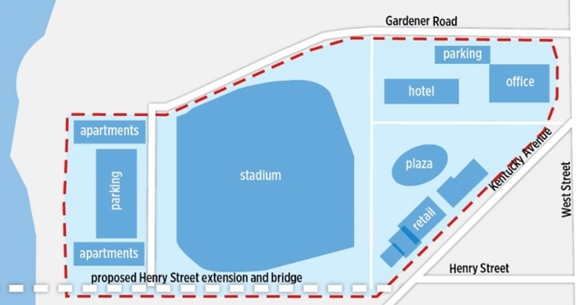
In fact, the 18-acre property was purchased by a real estate developer
in 2022 for $7.6 million. By 2025, there are plans to have a
20,000 seat soccer stadium, apartments, a hotel, and retail stores at
this location.
The Diamond Chain Company
of Indianapolis, IN was the first company in the United States to
produce bicycle chains.
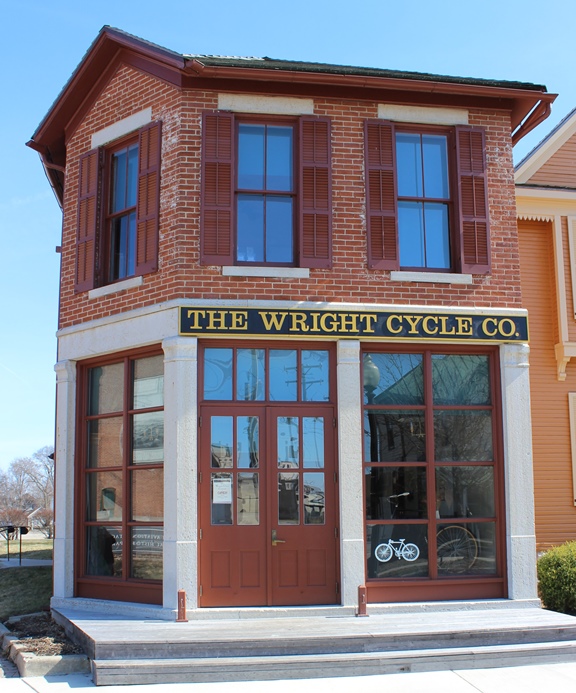
One of Diamond Chain's customers was a
couple of brothers that operated this shop at 22 South Williams Street
in Dayton, OH. Their names were Wilbur and Orville. Author's
photo.
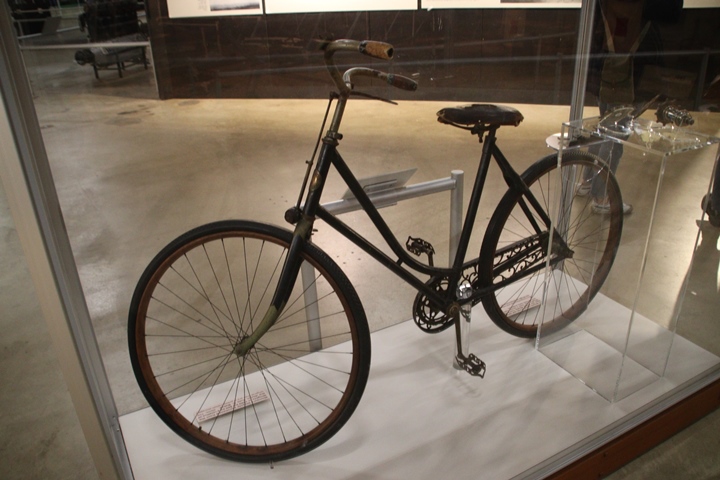
In 1895, a relative of Eula Baker purchased
this Wright Brothers' Van Cleve Model bicycle for her. She later
donated it to the National Museum of the United States Air Force in
Riverside, OH. Author's photo added 12-31-2022.
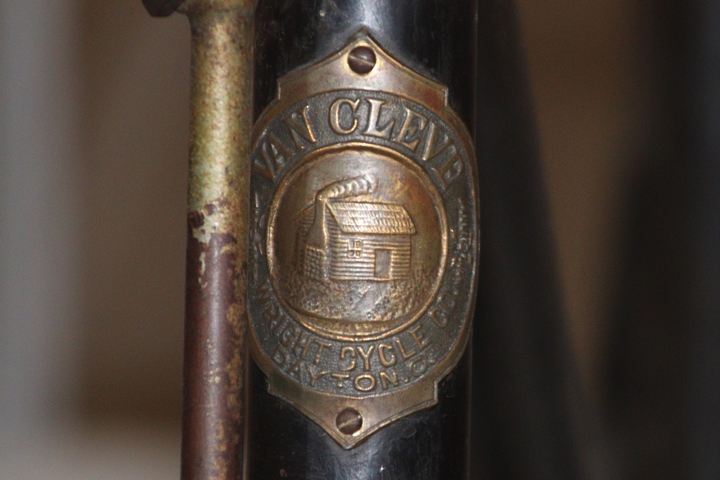
Author's photo added 12-31-2022.
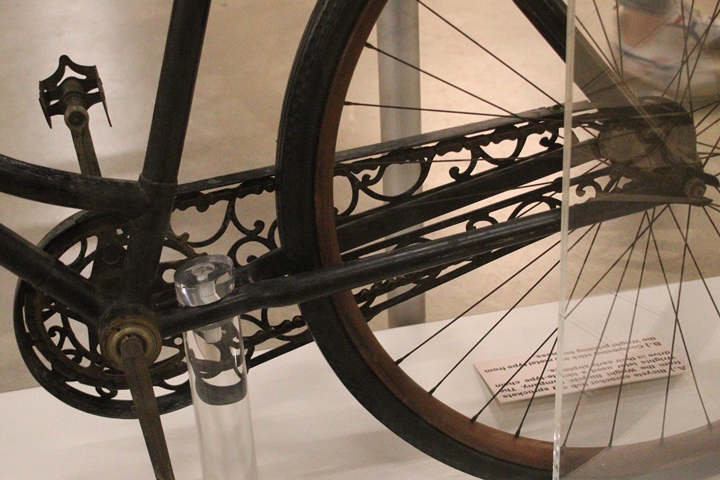
This may well have the original Diamond
Chain bicycle chain on it. Author's photo added 12-31-2022.
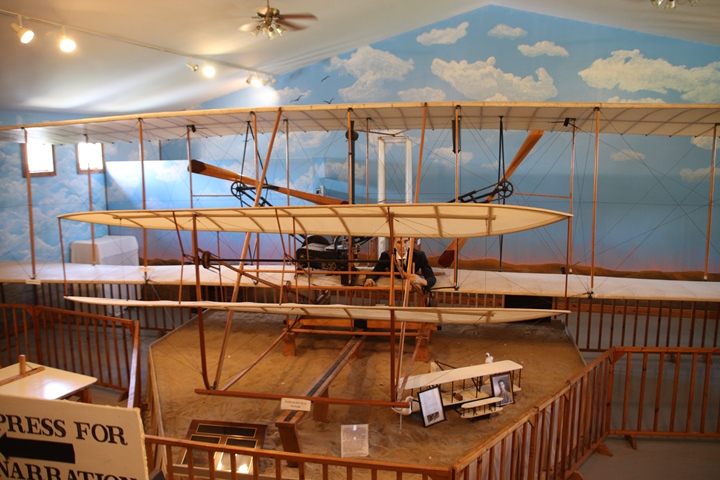
When it came time for Orville Wright to make
his historic first flight on December 17, 1903, there were seven Diamond
Chain and Manufacturing Company chains on the 1903 Wright Flyer when it
took to the air at Kill Devil Hills, NC. Author's photo from the
Wilbur Wright Birthplace Museum in Hagerstown, IN.
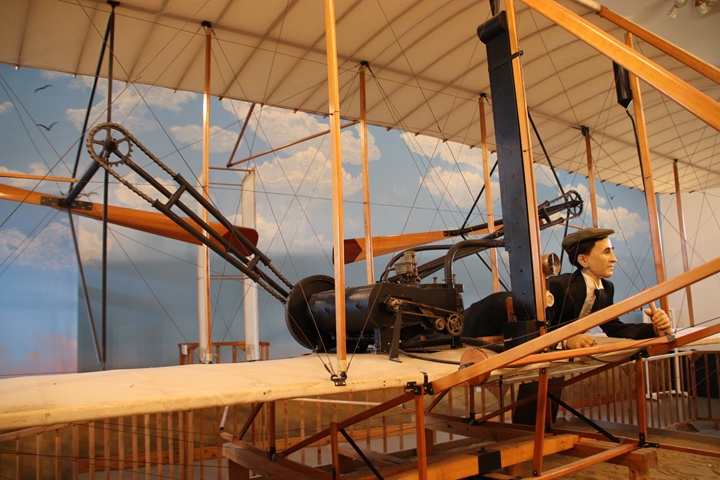
Two Diamond Chain Company chains drove the
two propellers. Author's photo.

This Diamond-made chain was used as the
timing chain on the engine. Four other chains were used to operate
the control services on the aircraft. Author's photo.

Quite a few of the aviation museums I have
visited around the United States have replica Wright Flyers just like
the one on display at the Wilbur Wright Birthplace Museum.
However, at this museum the Wright Flyer is the featured display and not
one of many aircraft on display. I have visited this museum quite
a few times over the years and always enjoy my return trips. I
consider it to be one of the 'Hidden Gem Museums' that I like to find
and visit. While not very big and out in the middle of east
central farming country, it is well worth the trip for aviation
historians and enthusiasts. One thing that is most noticeable at
the museum when one gets out of his vehicle is the quiet. It is
far enough away from 'civilization' that it is very, very quiet in the
area. Author's photo.
On display at the museum are several Diamond
Chain blueprints for the chains used on the 1903 Wright Flyer. The
one above is for the cam shaft drive.
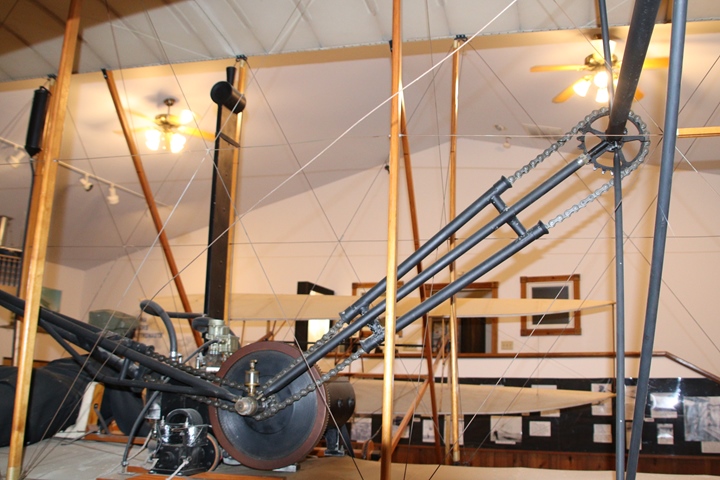
Author's photo.
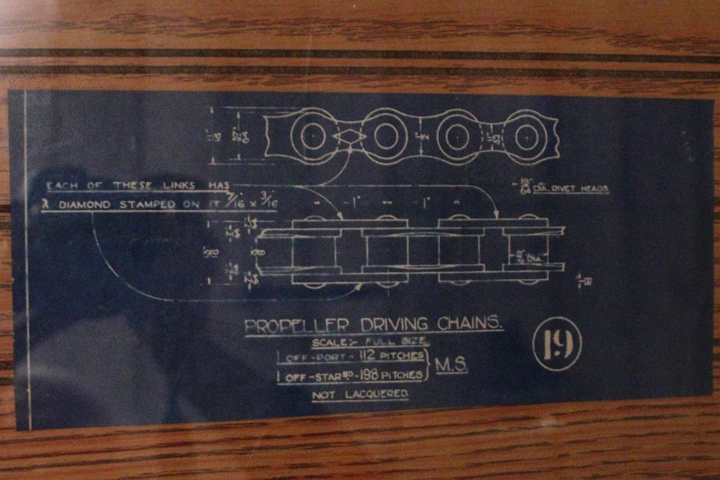
The museum has the blueprint for the
propeller driving chains. Author's photo.
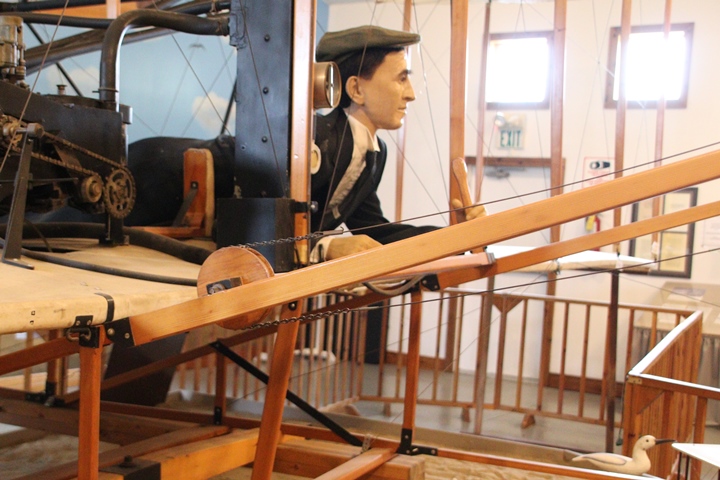
This is one of four control surface chain
and cable assemblies on the Wright Flyer. Author's photo.

Each Diamond-built chain on the Flyer was
specially built to the Wright Brothers' specifications. Author's
photo.
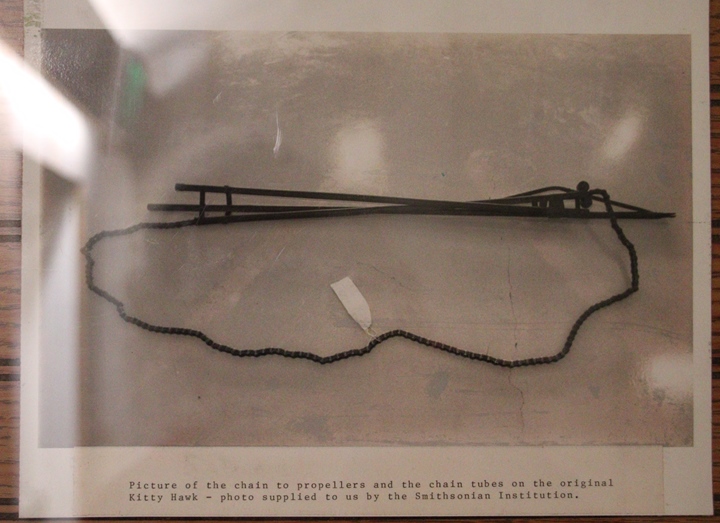
This photo of the original Diamond Chain
Company chain to propellers and chain tubes used on the 1903 Flyer is on
display at the museum. The original 1903 Wright Flyer is on
display at the National Air and Space Museum in Washington, DC.
Author's photo.
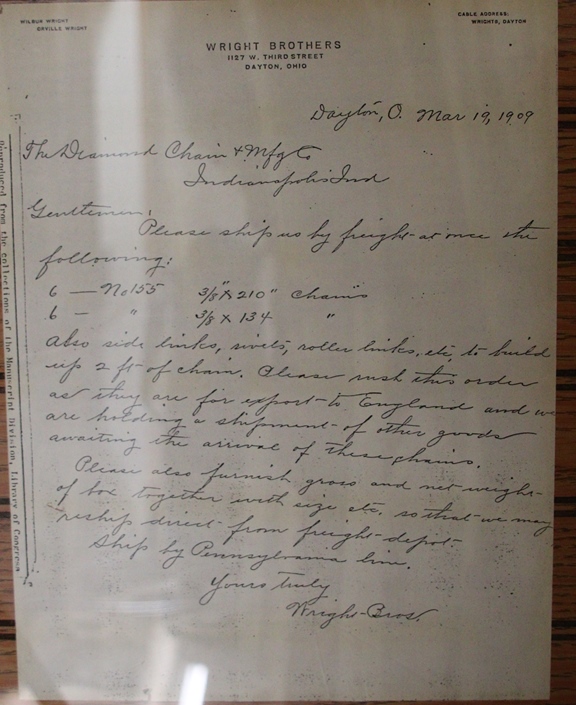
The Wright Brothers continued to use
Diamond Chain for later projects. Author's photo.
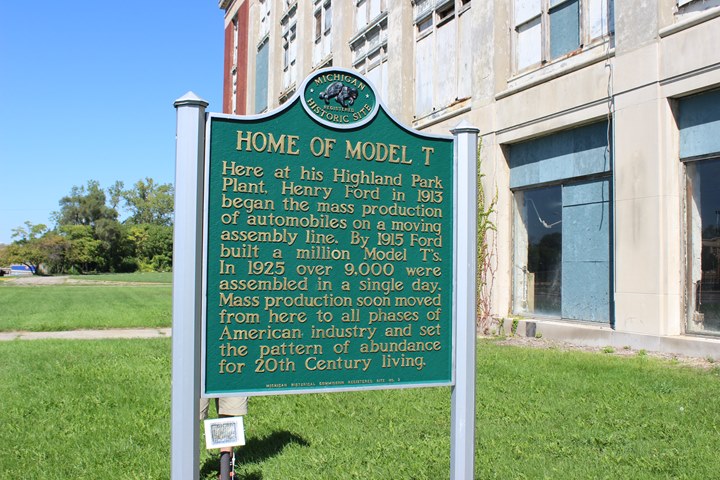
The Diamond Chain and Manufacturing Company
has a strong connection with the Ford Highland Park Assembly Plant.
Ford instituted the moving assembly line for the Model T at the Highland
Park Plant. For the first month, a rope was used to pull the
vehicles down the assembly line. After that, the assembly was
equipped with a continuous Diamond Chain and Manufacturing Company chain
to move the Model Ts down the assembly line. There is no doubt
that Diamond Chain went on to supply chains for the other Ford plants as
they converted to the moving assembly line along with many of Ford's
competitors. Author's photo.
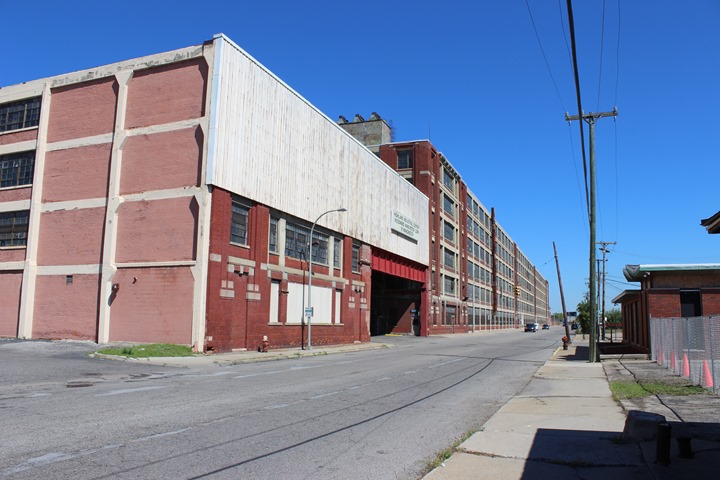
Parts of the Highland Park plant still
exist. One can just imagine the Model T's moving down the long
assembly line pulled by a Diamond Chain and Manufacturing Company's
roller chain. Author's photo.
Diamond Chain and Manufacturing Company's
World War Two Products: Roller chains are ubiquitous.
While their best known use is for bicycles, they have a multitude of
uses. Below are the known applications for the company's chains
and sprockets during World War Two. There is no doubt that there
are hundreds of Diamond roller chain applications yet to be discovered
that helped win World War Two.
Diesel Locomotives:
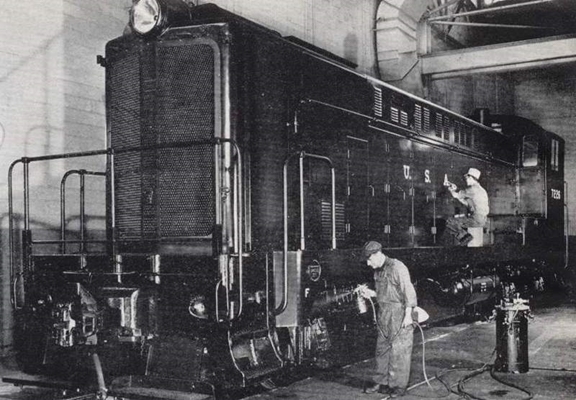
The Baldwin Locomotive Works produced 26
Model VO1000 diesel-electric locomotives like this one for the U.S. Army
during World War Two. Baldwin also made 40 for the U.S. Navy.
All of them had timing chains furnished by Diamond.
Motorcycles: Diamond Chain and
Manufacturing Company supplied the rear drive chain for the
Harley-Davidson WLA motorcycle. This was the predominant
motorcycle used by the U.S. Army during World War Two.
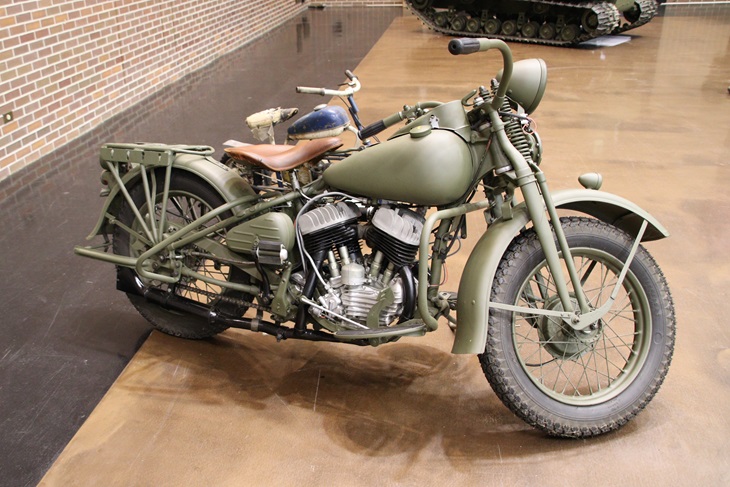
There were 62,486 WLAs built during World
War Two. Author's photo.

Diamond Chain supplied 62,486 rear drive
chains plus spare chains and parts. Author's photo.
Tanks: Marmon-Herrington was one
mile west of the Diamond Chain plant in Indianapolis, IN. When it
needed roller chains for the many types of vehicles it produced,
Diamond's close proximity allowed for quick interfacing during the
design process. A Diamond Chain World War Two magazine
advertisement shows a Marmon-Herrington tank.
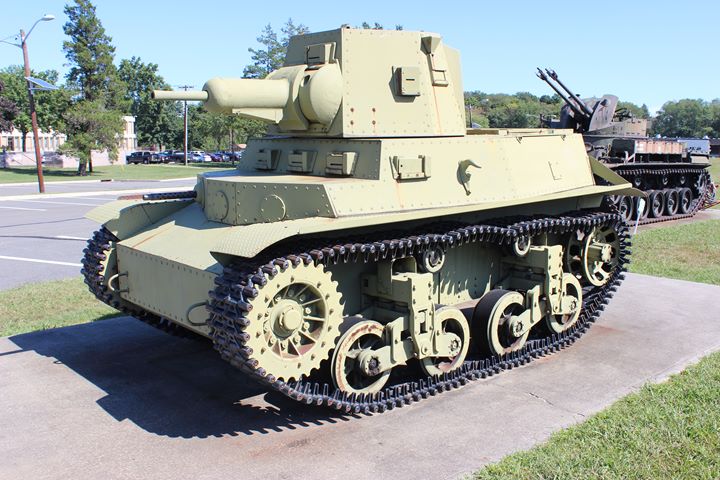
This Marmon-Herrington CTMS-1TB1 Light Tank is
one of several types of tank that the company produced early in
World War Two. It is unknown what applications the
Diamond-produced chains were used for in these tanks. Author's
photo.
Aircraft: During
World War Two, Diamond Chain supplied chains and sprockets for 25
manufacturers of fighters, bombers, trainers, and transport aircraft.
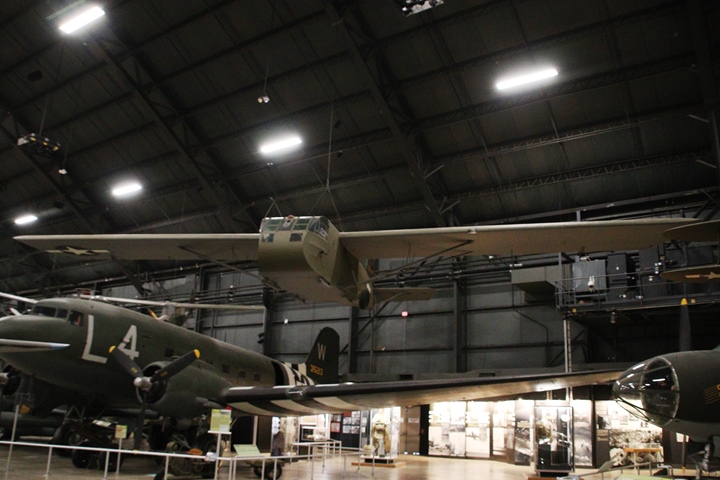
This is one of 13,903 CG-4As combat gliders
built by sixteen different companies to help win World War Two.
Each of the 13,903 CG-4As came equipped with two Diamond Chain and
Manufacturing Company aileron control chains. Author's photo.
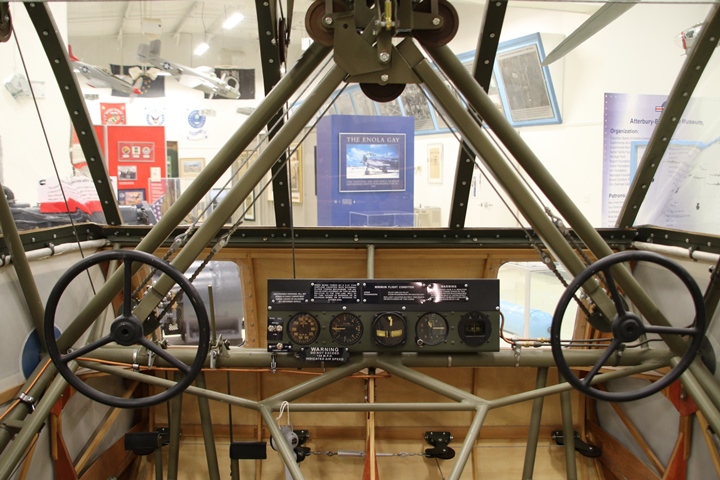
This cockpit of a CG-4A shows the chains
connected to the cables that run out to the ailerons. Author's
photo.

This Diamond Chain document shows that the
glider aileron control chain was an X-1282 base.
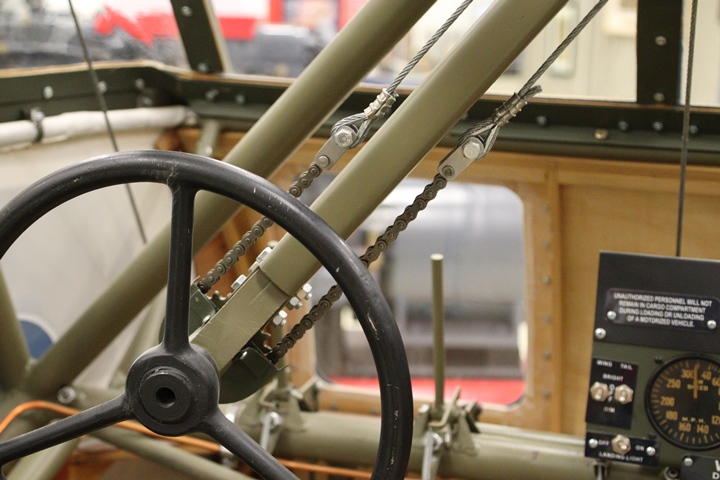
Diamond Chain may also have furnished the
sprockets for the aileron control assembly. Interestingly enough,
there was no standard length of chain used by the sixteen different
manufacturers, so various lengths were used. Author's photo.
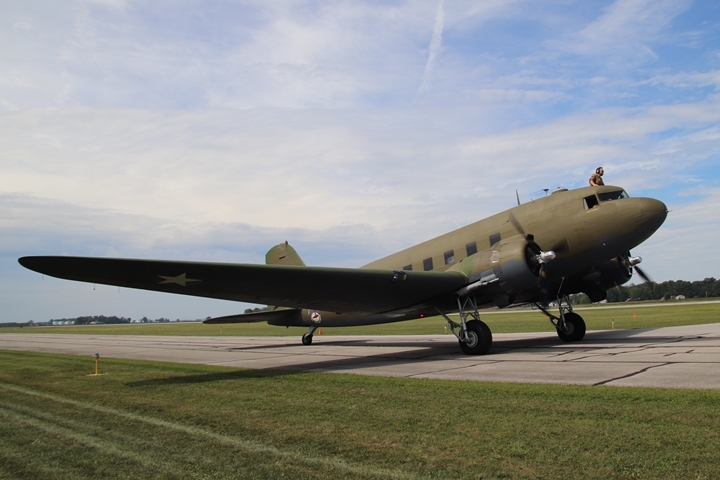
According to Diamond Chain and Manufacturing
Company's World War Two advertising, the Douglas C-47 also used the
company's roller chains. Author's photo.

Diamond Chain and Manufacturing Company
supplied chains and sprockets for the Martin B-26 Marauder. These
components were used in the nose wheel and main wheel gear door
mechanisms. These were Diamond Chain part numbers X-1466 chain
with 26 tooth sprockets and X-1348 chain with 15, 23, 30, and 33 tooth
sprockets. Author's photo.
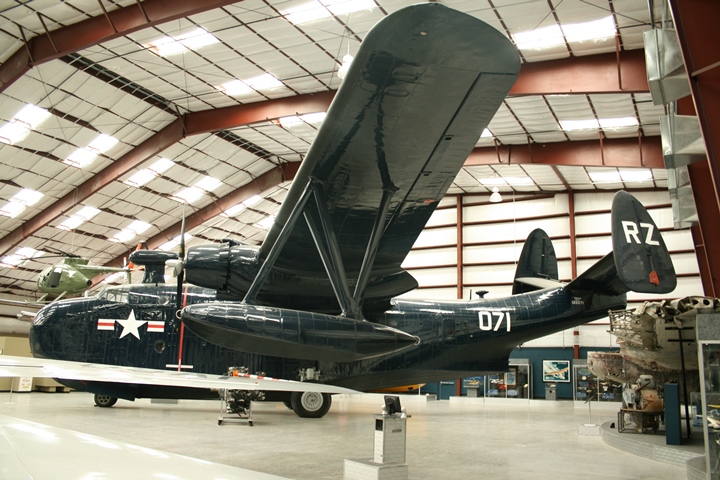
Diamond Chain furnished chains for the bomb
bay door operating mechanisms for the PBM-3C version of the Martin PBM
series of aircraft. This was Diamond chain X-133459 with 11 and 33
tooth sprockets. Author's photo.
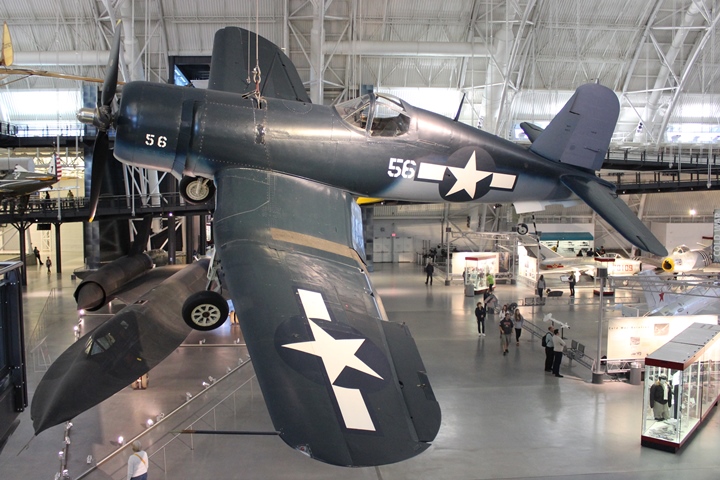
Diamond Chain supplied chain part number
X-12867 for the Vought F4U-1C Corsair. This chain, along with 9
and 25 tooth sprockets, was used to open and close the tail wheel door.
Author's photo.
Diamond Chain and Manufacturing Company
Landing Gear Retraction and Extension Applications: The
company provided several types of roller chains and sprockets for
operating landing gear retraction and extension systems for both the
U.S. Army Air Forces and U.S. Navy. Chains used for the gear
retractions were Diamond Chain part numbers X-1282, X-5282, X-1365,
X-1466, X-12867, XH-12867, XH-52867, X-1348, and X-1548. The
coupling used for these applications was part number XT-5282. The
light weight sprockets used ranged from 8 to 59 teeth.

Grumman produced 1,768 F4F Wildcat fighters
in several different versions early in World War Two. The Grumman
Wildcat was the first line fighter for both the U.S. Navy and USMC
during 1941-1943. This fighter held the line against the Japanese
Navy and Army Air Forces until more modern fighters could be built and
pilots trained to fly them. In late 1942 and early 1943, the
Grumman Wildcat engaged almost daily with Japanese fighters over the key
battleground of Guadalcanal. As each F4F took off from Henderson
Field on Guadalcanal to defend against enemy air attacks, a Diamond
Chain and Manufacturing Company's chain retracted the main landing gear.
Authors' photo.
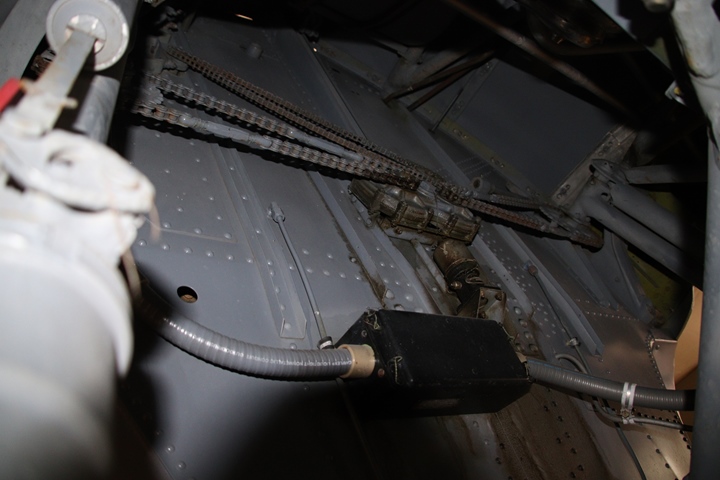
The gear retraction system with the Diamond
chain can be seen in this photo. Authors' photo.
In early 1943, the Eastern Aircraft Division
of General Motors began producing the Wildcat under license as the FM-1
and FM-2. Eastern Aircraft produced 1,060 FM-1s and 4,777 FM-2s
which also used Diamond chains in the landing gear system. FM-1s
and FM-2s worked off of small escort carriers and performed
anti-submarine patrols. They provided air cover during island
invasions. Diamond chains were in the thick of the fighting all
through the Pacific War.
The Wildcat shown above is an Eastern
Aircraft-built FM-1.

This is one of four surviving Curtiss O-52s
of the 203 originally built. It is on display at the National
Museum of the United States Air Force. Author's photo added
12-31-2022
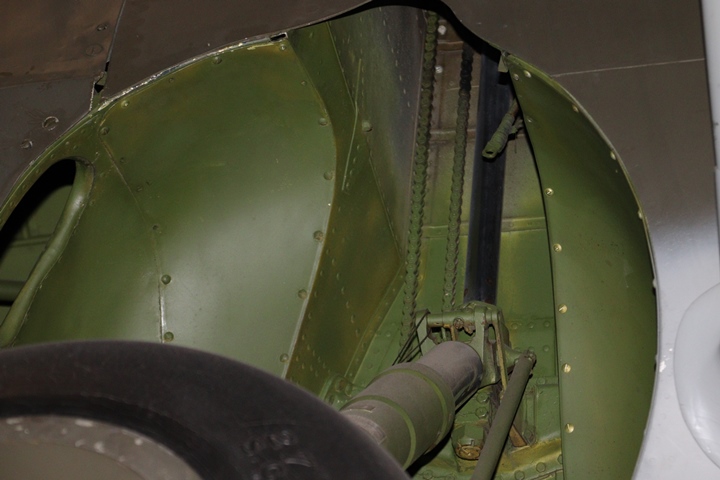
This and the next photos show the Diamond
roller chain inside the port main gear bay. Author's photo added
12-31-2022
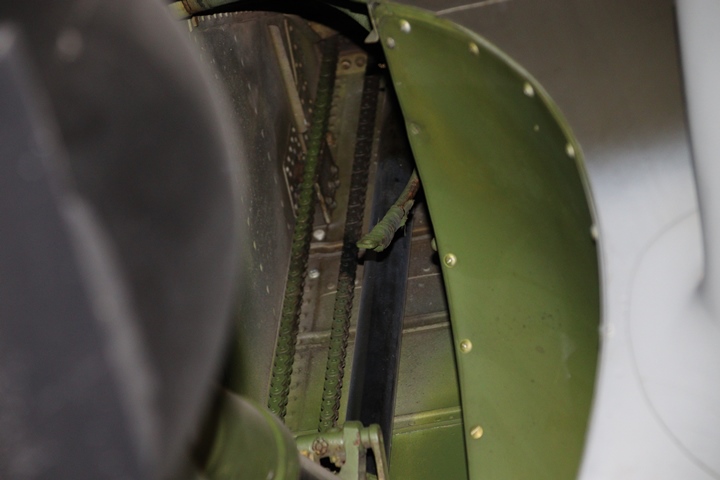
Author's photo added 12-31-2022
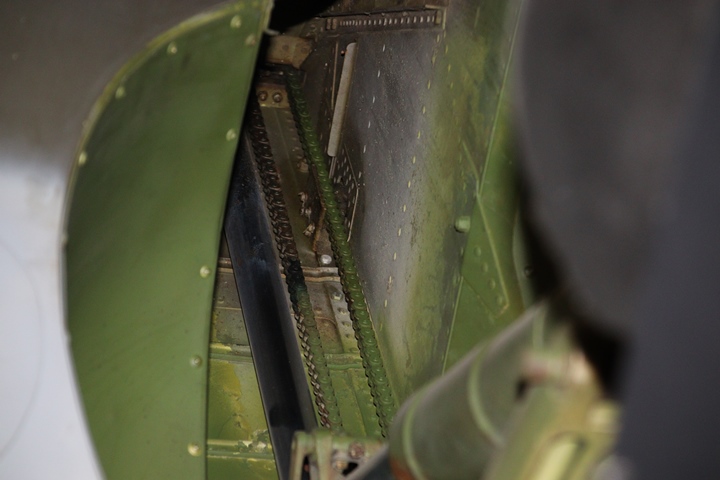
This photo shows the Diamond roller chain
inside the starboard main landing gear bay. Author's photo added
12-31-2022
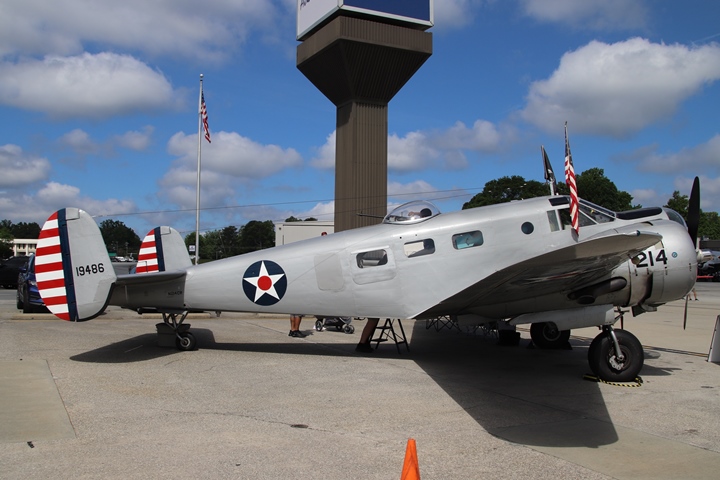
This Beech AT-11 was one of several versions
of the company's Model 18 that was used in various roles during World
War Two. The AT-11 was used to train bombardiers and gunners.
It used a Diamond chain system to retract and extend the landing gears.
Other Beech models that also used Diamond-built chains and sprockets
were the C-45, AT-7, and the SNB. Authors' photo.
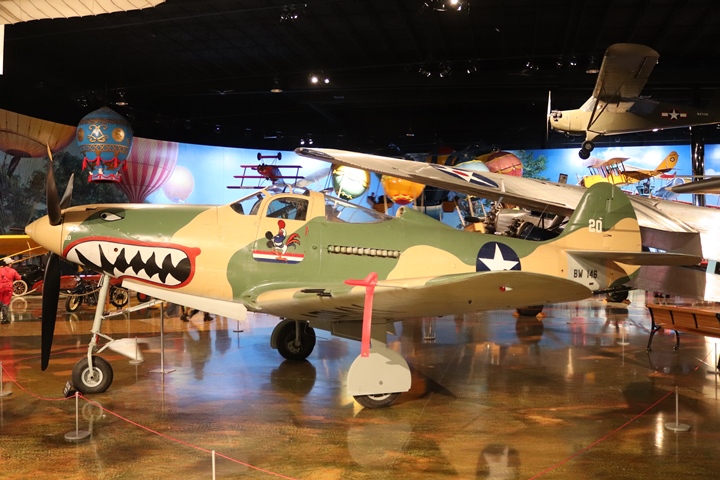
The Diamond Chain and Manufacturing Company
supplied several different roller chains and sprockets for the Bell P-39
Airacobra. These were for the motor-driven and hand-operated
landing gear retraction system, flap drives, aileron trim tab control
system, rudder trim tab control system, and elevator trim tab control
system. Diamond was also the manufacturer of the nose wheel shaft
coupling. Bell Aircraft built 9,588 P-39s during World War Two.
Author's photo.
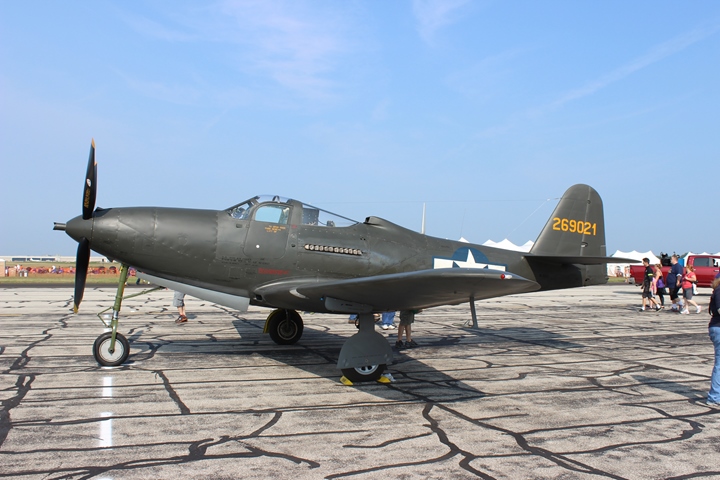
The Bell P-63 King Cobra was a larger and
newer version of the P-39 which also used Diamond Chain and
Manufacturing Company chains and sprockets for extending and retracting
the gear. There were 3,273 P-63s built. Author's photo.
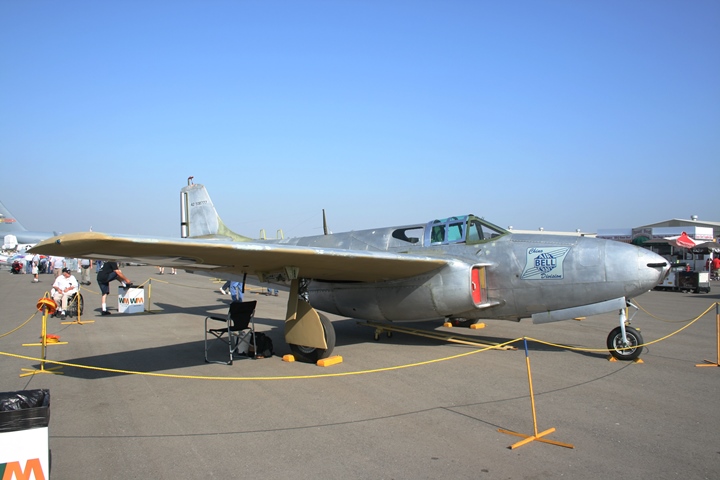
The Bell P-59 series of aircraft was the first jet aircraft produced in
the United States. The first XP-59 flight was on October 2, 1942.
A total of 66 XP-59s, YP-59s, P-59As, and P-59Bs used a Diamond Chain
system to extend and retract the landing gear. Author's photo.
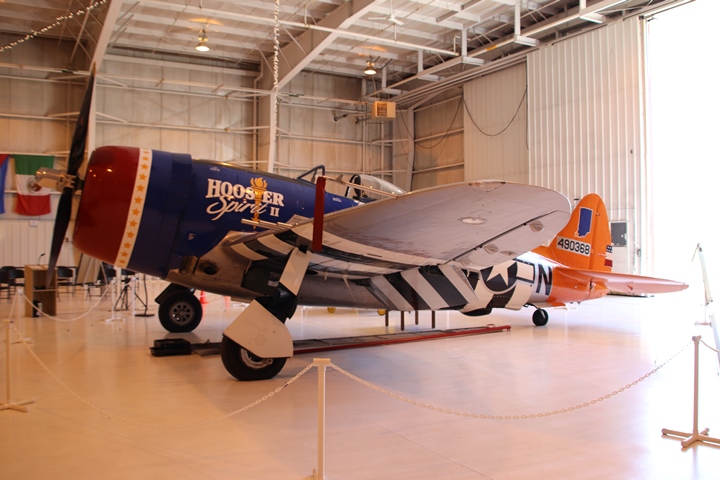
The Republic P-47 was the fighter that
gained air supremacy over Europe before the D-Day invasion of Europe on
June 6, 1944. Diamond Chain supplied the chains and sprockets for
P-47's gear retraction and extension system. Republic built 15,686
P-47s in several different models. Author's photo.
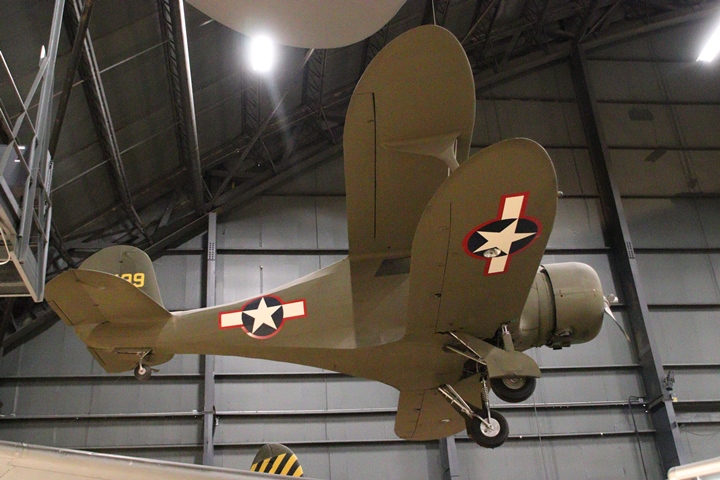
The Beech UC-43, better known as the Beech
Staggerwing, also utilized Diamond Chain and Manufacturing Company
roller chains. This is one of 240 ordered by the U.S. Army Air
Forces during World War Two. Author's photo added 12-31-2022.
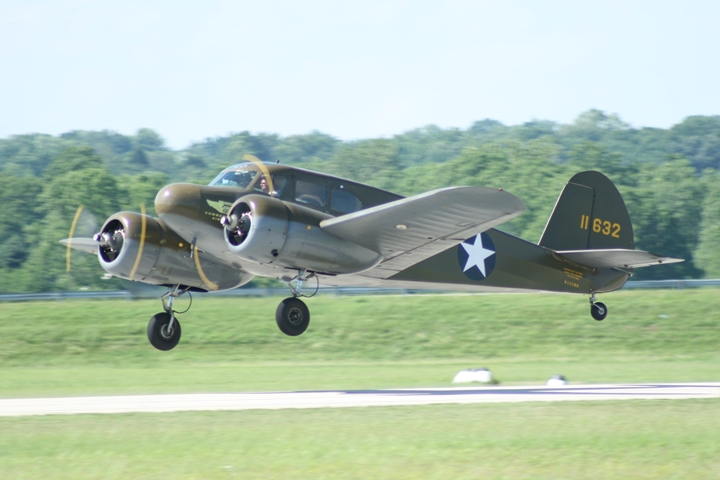
This is a Cessna T-50 which was also built
under the designations AT-18, AT-17, and UC-78. In total, 5,400
were built in all designations during World War Two. All types
utilized Diamond Chain roller chains in the landing gear system.
Author's photo added 12-31-2022.
U.S. Army Coastal Freighters:
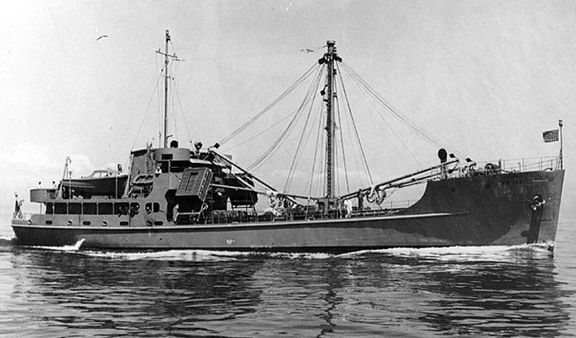
Higgins Industries of New Orleans built 100 170-foot coastal freighters like
this one for the U.S. Army. In the southwest Pacific, the Army
had its own navy to supply its various island bases. Diamond
Chain and Manufacturing Company supplied roller chains for the two
transmissions in each ship.
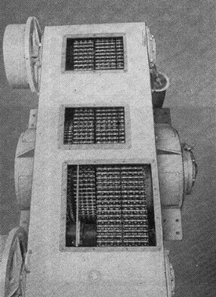
The two engines in the ships were
non-reversing right hand drive units. Transmissions with Diamond
Chain roller chains allowed the ship's propellers to run in both forward
and reverse directions.
DUKW:
The GMC DUKW was an amphibious truck based
on the CCKW 2-1/2-ton truck. GMC and Chevrolet built a combined
total of 21,147 DUKWs. The chains to drive the two bilge pumps on
the DUKW were provided by the Diamond Chain and Manufacturing Company of
Indianapolis, IN.
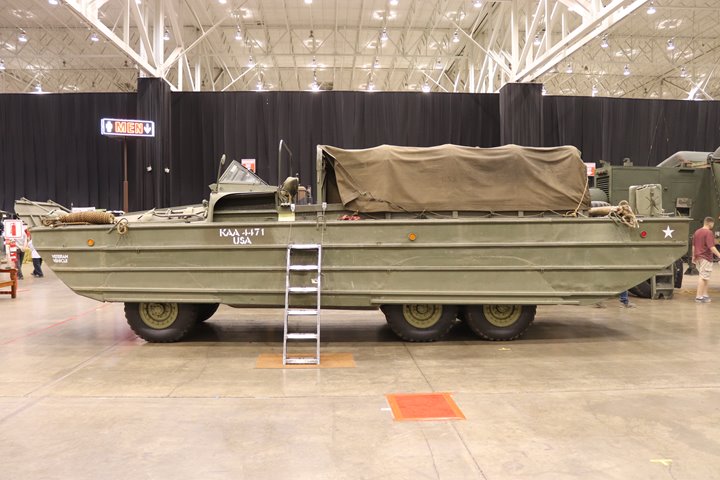
Author's photo.
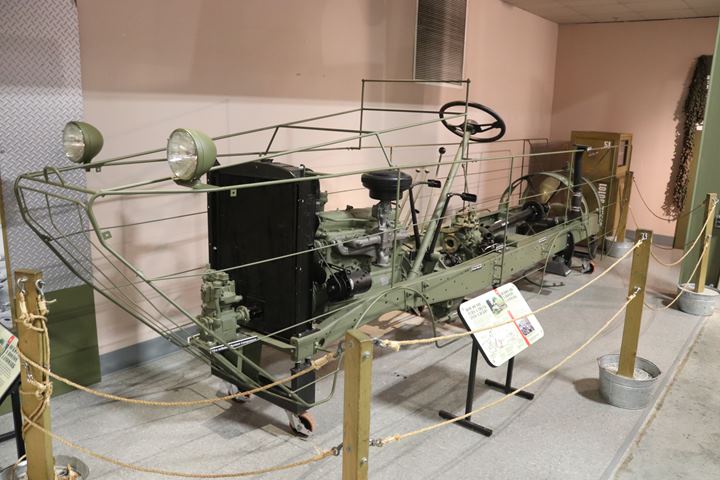
This is a very cool space-frame
display of the DUKW at the Wright Museum of WWII, Wolfeboro, NH.
The frame rails have been pulled into the width of the drive train so
the visitor can see the inner workings of the DUKW. Author's
photo.

The forward and rear bilge pumps on the DUKW
were very important for the safe operation of the vehicle. Without
operating bilge pumps, the DUKW would fill with water due to its low
freeboard. At Normandy, a number of DUKWs sank when they ran out of
fuel and could no longer operate their bilge pumps. The Diamond chains that drove the bilge pumps were an
important part of keeping the DUKW afloat. Author's photo.
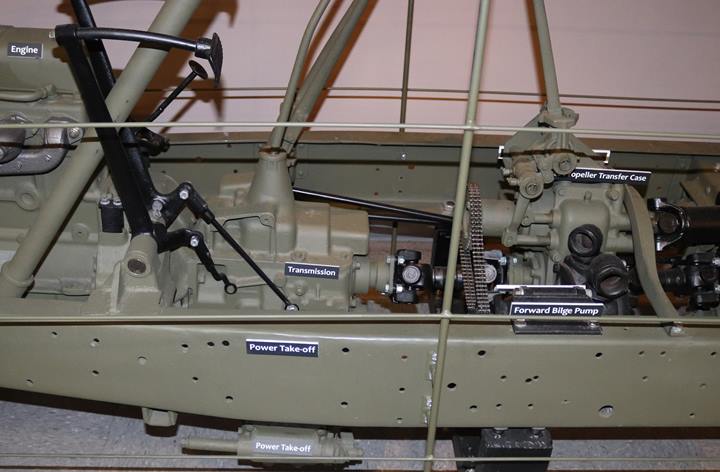
Author's photo.
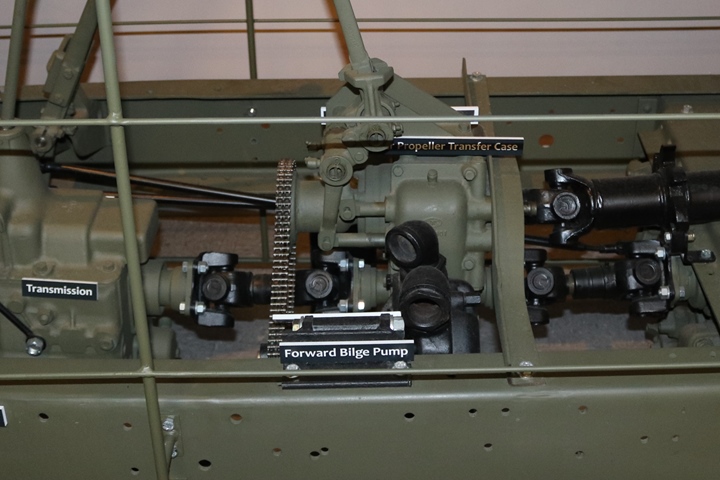
The forward bilge pump used a double row of
Diamond roller chain. Author's photo.
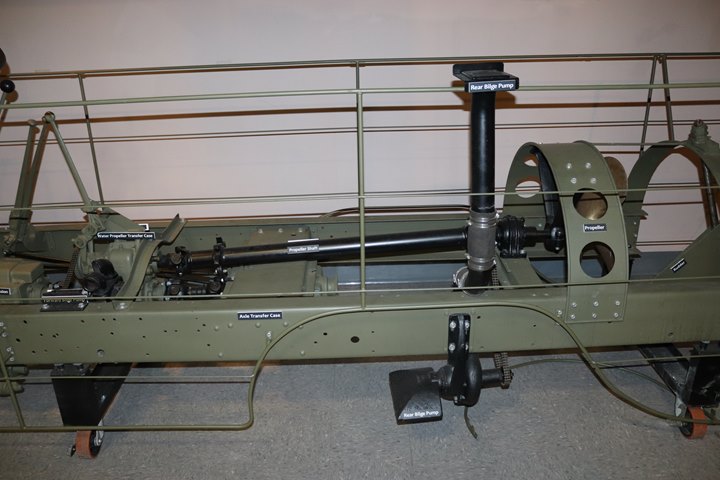
Author's photo.
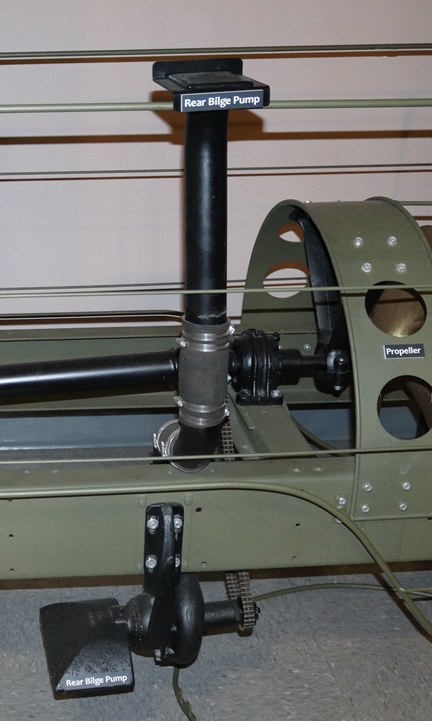
The rear bilge pump also used a Diamond
Chain double row roller chain. Author's photo.
Clark Equipment Company "Planeloader"
Forklift Truck: The Clark Equipment Company produced an
unknown number of forklift trucks for loading and unloading transport
aircraft during World War Two. Diamond Chain and Manufacturing
Company provided two chains to lift and lower the forks.


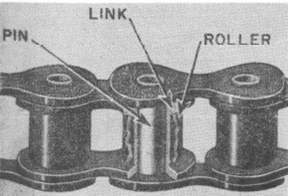
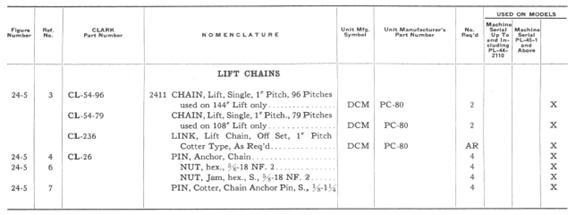
DCM is the abbreviation for Diamond Chain
and Manufacturing Company.
Bomb Hoist Slings: The company
produced the Army Type A-2 Sling-Hoists. These were approximately
78 inches in length.
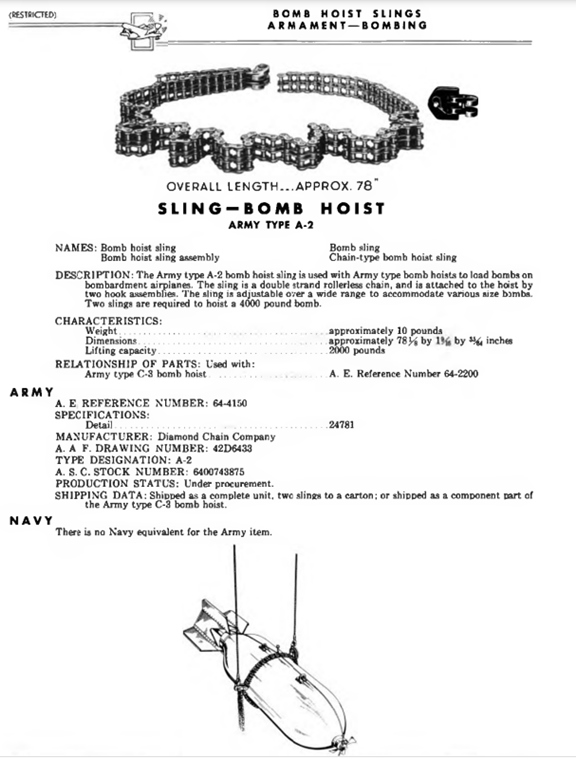

The Diamond Chain and
Manufacturing Company Plant: As previously noted, the
Indianapolis operation will be shuttered in early 2023 and the plant
shown below will be razed for redevelopment. The original portion
of the factory was built in 1918 with additions added as more capacity
was needed. For 104 years, the company in this factory has supplied
the world with roller chain and provided thousands of jobs for
Indianapolis, IN workers. It will be sad to see this icon of
American industry disappear from the near south side Indianapolis
landscape and take its factory jobs with it.
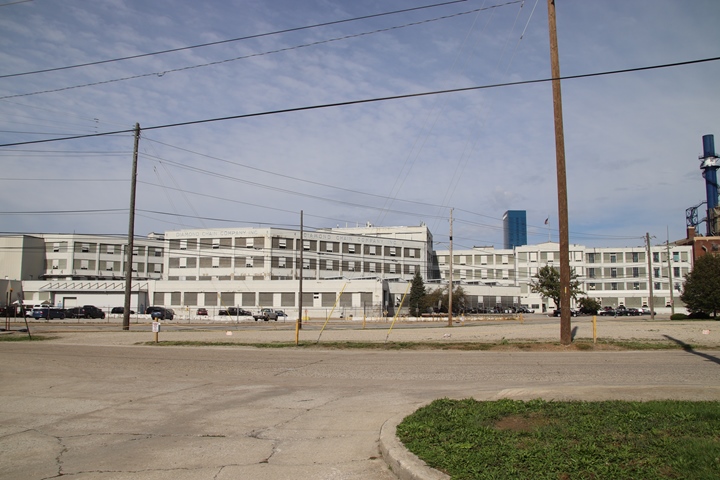
Author's photo.
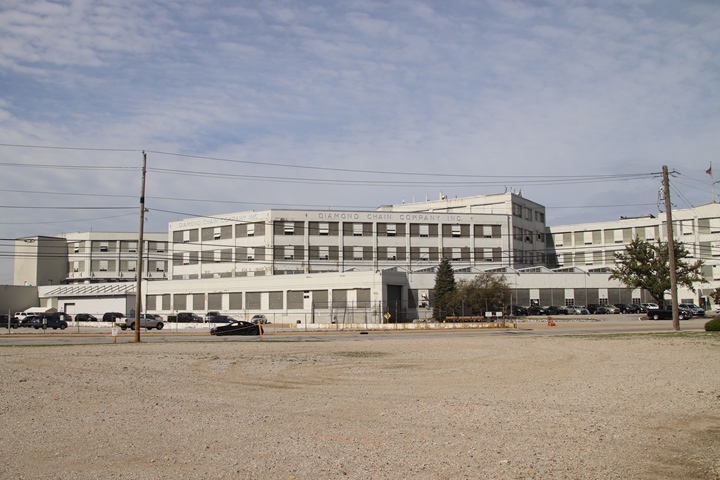
Author's photo.

Author's photo.
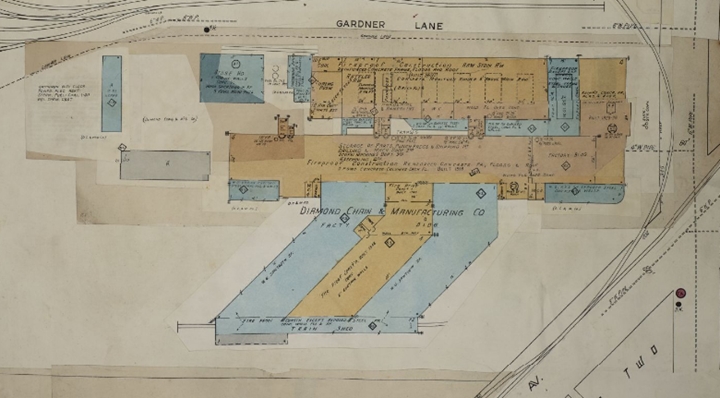
This post-World War Two era Sanborn fire map
shows the plant layout. The north section along Gardner Lane was
the location of the original 1918 factory.
Next is a series of Google Earth images that
give an excellent view of the Diamond Chain plant that already has been
razed. These images are being added over a year after the
demolition began. Luckily, Google Earth has not yet been updated
as of May 27, 2024.
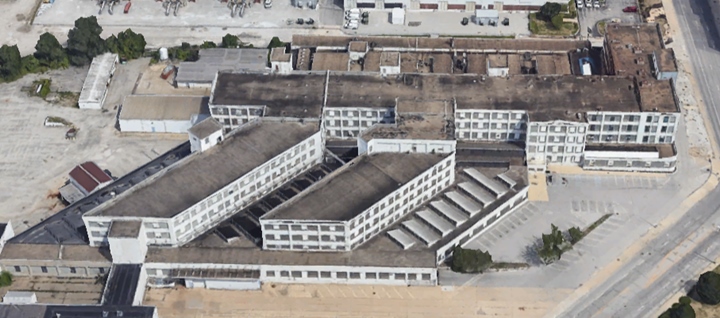
The former Diamond Chain plant was a most
unique design with the angled additions paralleling Kentucky Avenue.
Google Earth image added 5-27-2024.

This low angle view is looking north at the
Diamond Chain plant. Google Earth image added 5-27-2024.
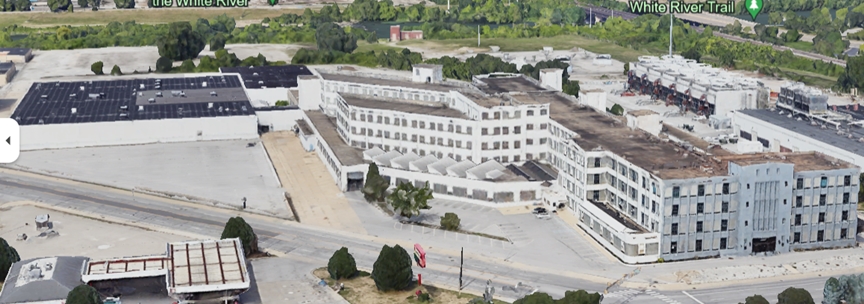
This image is looking west and shows the
modern one story addition at the south end of the plant. Google
Earth image added 5-27-2024.

This is looking south and shows the original
plant building. Google Earth image added 5-27-2024.

When the Diamond Chain plant was built in
1918, Indianapolis was not the city it has currently grown up to be.
Having a factory near the downtown area was a good and common practice
as workers needed public transportation to get to work, or walked from
their nearby homes. But 100 years later, the near south side
of Indianapolis has changed. The Diamond Chain plant was only a
block away from the stadium where the Indianapolis Colts play. An
underutilized multi-story factory no longer fits into the long term growth
of a city that now focuses on both amateur and professional sports teams
as a job generating mechanism. Google Earth image added 5-27-2024.

This view looking northeast shows the former
Diamond Chain plant was a factory on the edge of the downtown business
and entertainment district. Google Earth image added 5-27-2024.
As of the end of May 2024, the future of the
former Diamond Chain factory location for a professional soccer team and
other development is not clear. It is locked up in politics and
whether the developer that tore down the factory has the funding to
actually move forward with the project. It is unclear whether the
soccer field will actually be built at this or some other location
within the city. Maybe the developers got ahead of themselves and
tore down a very cool factory building for no reason at all.
|




































































